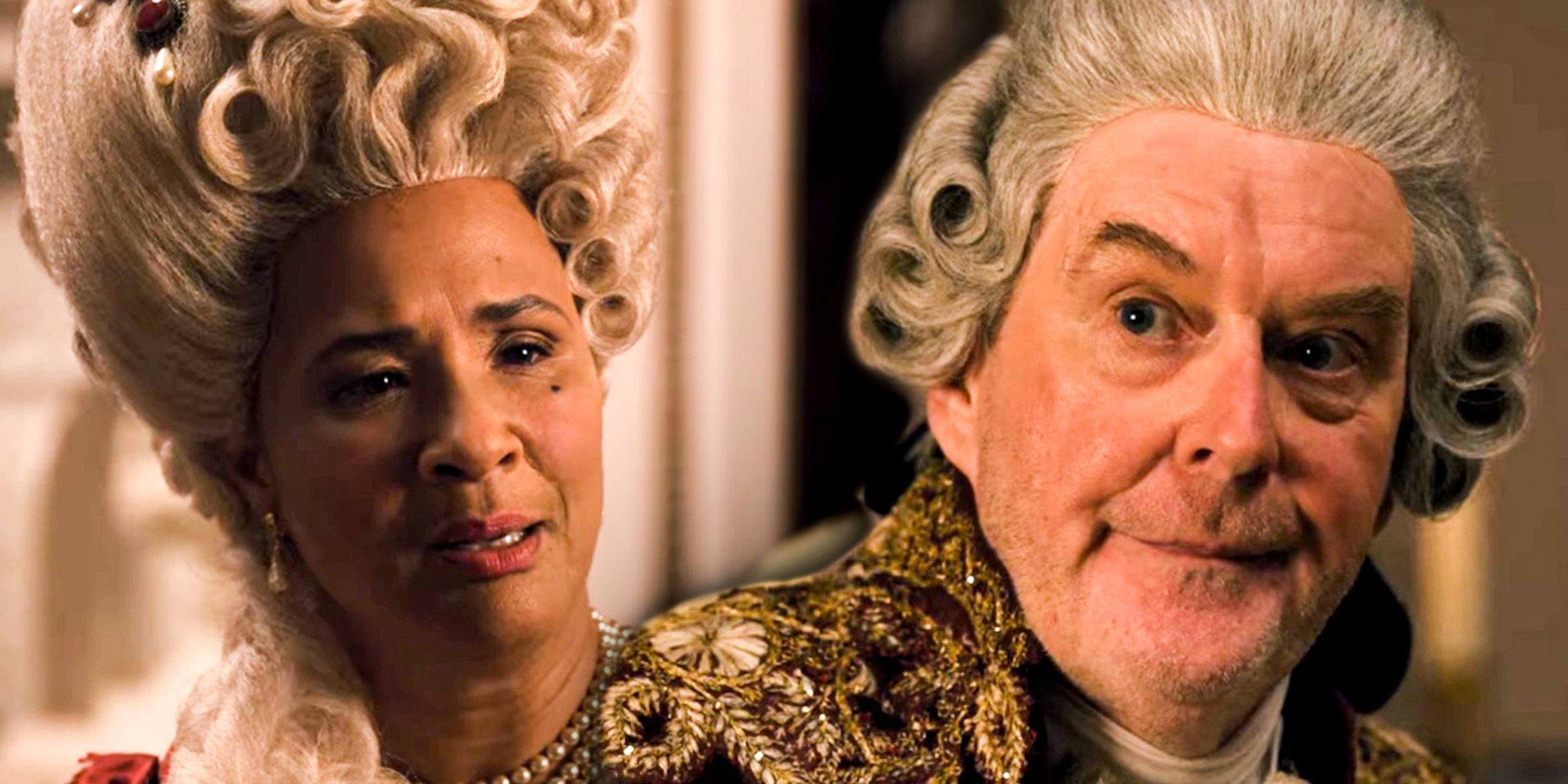In Bridgerton, King George III only appears briefly because, as in real life, the king’s illness was so severe he had to be kept hidden away.
In Bridgerton seasons 1 and 2, King George III appears only briefly and is mentioned infrequently – partly because he’s not meant to be a major character and partly because, by that point in time, he was simply too ill to appear publicly. Played in Bridgerton by James Fleet, King George III was unable to continue ruling as a monarch by the time he reached middle age. But even after his son, George IV, took over the king’s duties, George III’s incoherency and instability also made him a poor face for the royal family, and he was kept out of the public eye to protect the monarchy’s image. Queen Charlotte became the new face of the royal family and continued to support her husband, even when it became too difficult for her to see him.
By King George III’s later years, he was kept confined and out of sight, much like he is in Bridgerton. However, unlike Bridgerton, Queen Charlotte had reportedly stopped dining with George. She slept in a separate bedroom from George and refused to be alone with him from 1804 onward. By 1813, when Bridgerton takes place, it’s believed that Queen Charlotte had stopped seeing George altogether. But more importantly, King George isn’t meant to be a major Bridgerton character.
George III’s three appearances in Bridgerton are only relevant because of what they reveal about Queen Charlotte. The brief dinner scene with Queen Charlotte and King George III in the first season provides a somewhat true-to-life explanation for Queen Charlotte’s interest in the fictional Lady Whistledown. As soon as we see how tortured King George III has become, and how much this disturbs his wife, it becomes perfectly clear that Charlotte needs a distraction – and Lady Whistledown provides such a perfectly enveloping and delightful diversion that, at times, Queen Charlotte seems to forget her husband’s poor health.
King George III’s Illness In Bridgerton
While King George III is mentioned in Bridgerton, he plays a mostly offscreen role, but his illness is very much based on historical accounts of the monarch. According to these accounts, King George III’s illness included symptoms like convulsions, frothing at the mouth, rambling incoherently, bouts of depression and, later in his life, the loss of his hearing, vision, memory, and ability to walk. After the death of Princess Amelia, George sank into a deep depression and never recovered from the loss of his favorite daughter. In 1811, King George III enacted the Regency Act, which allowed his son to function as regent. Queen Charlotte became George’s legal guardian and the king’s mental and physical health continued to deteriorate until his death in 1820.
The exact cause of King George III’s “madness” is a topic of debate among historians and physicians. Until recently, the prevailing theory was that King George III had porphyria (a rare liver disorder) and that his exposure to arsenic contributed to worsening symptoms. Though evidence for King George III having porphyria is well-documented and the theory is still widely accepted, conflicting theories have emerged in recent years. In the last decade or so, scientists, doctors, and historians have posited that King George III did not, in fact, have porphyria, but instead had some combination of bipolar disorder, chronic mania, and dementia. Dr. Peter Garrard of St George’s, University of London went so far as to say, “The porphyria theory is completely dead in the water. This was a psychiatric illness” [via BBC].
The Prequel Series Will Show Us A Younger King George III
Bridgerton‘s highly-anticipated prequel will follow the young Queen Charlotte (who in real life was only 17 years old when she wed King George III) and her eventual rise to the throne. It will also feature a young Lady Danbury and a healthier King George III, who is “mysterious but charismatic and … will apparently be forced to face some hidden demons in the wake of marrying Charlotte” (via MyLondon). After all, his and Charlotte’s romance is an essential part of her story. In season 2, King George III interrupts a conversation between Queen Charlotte and Edwina, who was supposed to marry into the Bridgerton family. George believes it is his and Charlotte’s wedding and his insistence softens Charlotte’s temper and shows just how her love endures, despite his illness. The prequel would be a wonderful opportunity to explore the foundations of this relationship and the momentous occasion George is reliving in Bridgerton season 2.
Rather than centering an infamous king who has been reincarnated and parodied in various fictional works, Bridgerton very intentionally made Queen Charlotte the most powerful character in its version of London. Queen Charlotte plays an important role as a figurehead for a society that is obsessed with rules, traditions, social hierarchy, and scandals. Though King George III is frankly irrelevant to the story of Bridgerton, his character may very well have a more meaningful narrative in the prequel.
About The Author

















































![Porno for Pyros Reunited Onstage at Welcome to Rockville [PHOTOS] Porno for Pyros Reunited Onstage at Welcome to Rockville [PHOTOS]](https://townsquare.media/site/366/files/2022/05/attachment-porno-for-pyros-2022-nathan-zucker.jpg?w=1200&h=0&zc=1&s=0&a=t&q=89)






